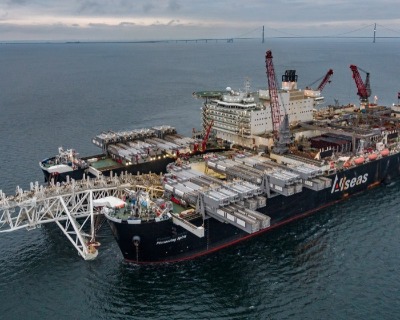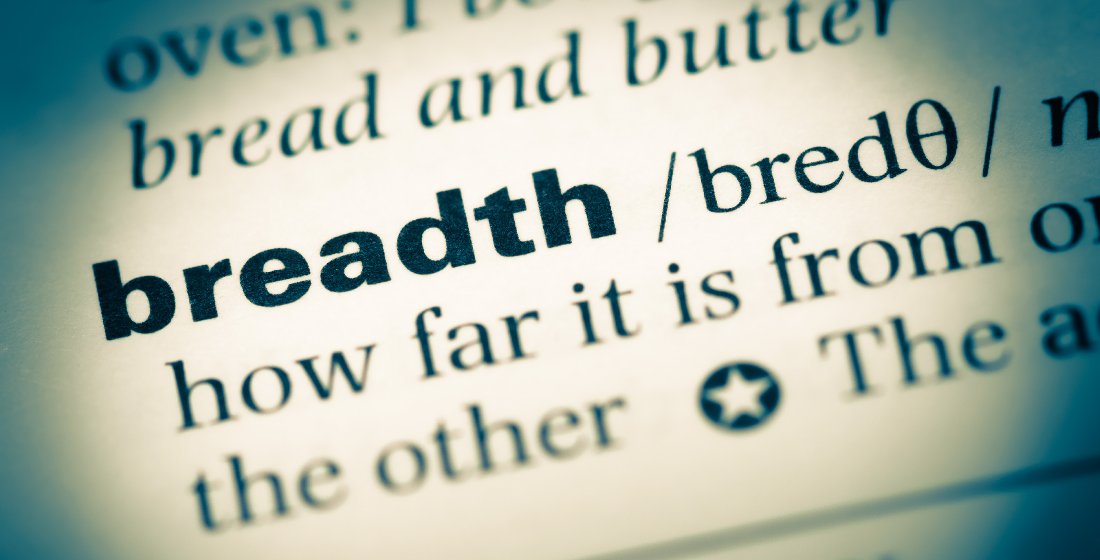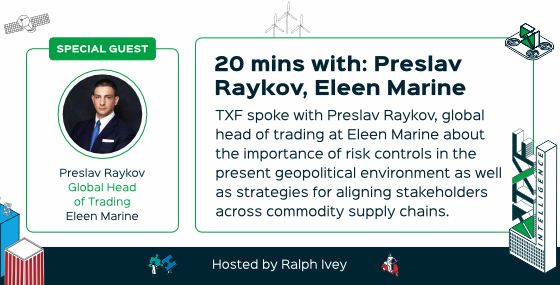Nord Stream 2 leaves politics in its wake
Despite the intense political debate surrounding the Nord Stream 2 gas pipeline, the project is moving ahead at great pace. Jonathan Bell examines what all the fuss is about.

Construction of the controversial Nord Stream 2 gas pipeline has been pushing on strongly through 2018, despite the intense political debates surrounding the project with an estimated total cost of €10 billion ($11.3 billion).
And only last week, another major hurdle was overcome when Germany reached a compromise agreement with the EU related to objections from France. To date, the major objectors to the project have been the US and Poland (see below). Yes, it’s certainly been a messy affair so far, and a tough route for Nord Stream 2 AG to travel down, but now the project finally looks to have a good measure of clear blue water.
And as far as financing goes, this immensely important project for Germany – and other countries in terms of gas supply - seems to be getting some steam up with export credit agency (ECA) backing. In late January, Paul Corcoran, chief financial officer of Nord Stream 2 AG, the operator of the pipeline construction project, told reporters: "We are still in discussions with export credit agencies. We are looking at somewhere around €6 billion." It is understood that at least six ECAs have been approached – agencies related to companies involved in the project.
Several international banks are known to be discussing financing for the project with Nord Stream 2 AG, but their involvement is dependent on being comfortable with the total finalisation of the political situation and remaining environmental concerns around the project.
The natural gas pipeline is set to run from the Russian town of Ust-Luga to Germany’s Greifswald, along 1,230 km of the Baltic Sea bed. It will go through the exclusive economic zones and territorial waters of five countries - Russia, Finland, Sweden, Denmark, and Germany, thus bypassing transit countries of Ukraine, Belarus, Poland and other Eastern European and Baltic states. The new pipeline will largely follow the route and technical concept of the existing and successful Nord Stream Pipeline.
The new pipeline will have the capacity to transport 55 billion cubic metres of gas per year (through dual pipelines), enough to supply 26 million European households. This secure supply of natural gas with its low CO2 emissions will also contribute to Europe’s objective to have a more climate-friendly energy mix with gas substituting for coal in power generation. It is expected to be carrying gas by the end of 2019.
Russia’s Gazprom is the only shareholder in the Nord Stream 2 pipeline. The Gazprom CEO, Alexei Miller, is named in US sanctions against Russia, and there has been some concern that this may hinder the project’s implementation. Gazprom's European partners in the project are Germany’s Wintershall and Uniper, Austria’s OMV, France’s Engie and Royal Dutch Shell. These companies will have considerable financial investment in the project.
Speaking to the New Europe publication in April last year, Nord Stream 2 AG spokesperson, Jens Muller, is quoted as saying: “We do not comment on the political decisions of sanctions. What we’ve seen is a guideline for sanctions which underlines that the United States would not harm the energy security of Europe and that every activity shall be coordinated with the Western allies.”
He is also added: “According to the financial agreements signed with Nord Stream 2 with these five companies (Wintershall, Uniper, OMV, Engie and Royal Dutch Shell), they will finance up to 50% of the capex. That means up to €950 million each. In addition to this, the companies are trying to optimise the financing process with the involvement of banks.”
Altogether it is estimated that around 200 companies from 20 countries will ultimately be involved in implementation of the Nord Stream 2 project for Europe’s long-term security of supply.
With the political debate surrounding the Nord Stream 2 project running in the background, the construction still managed to get under way and make substantial progress last year with legal national and international agreements being reached with most of the countries whose territorial waters the pipeline has to go through. It is understood there are still a couple of environmental concerns to be addressed.
As of November last year, 200 kilometres of pipeline has been laid in the Baltic Sea to date, with some 20 vessels operating simultaneously to ensure timely completion of the pipeline. Work is being carried out according to the permits received.
So, what has all the political fuss about this project been about? As mentioned above, the main objectors have been the US and Poland. What is the most obvious criticism is that it is an agreement for Europe to be supplied with more Russian gas. Some critics say that this places Germany and the pipeline at risk of Russia potentially using the gas tap as a political tool. In addition, the new pipeline cuts out transit through Ukraine and Poland. Given Germany’s criticism of Russia’s illegal occupation of the Crimea some see this deal as double standards. But some would say – needs must.
For Germany, the country is on a mission to cut out nuclear power, reduce coal-powered generation, along with cleaner natural gas and the development of renewables. At the same time, of current supplies in Europe, those largely from Norway and North Africa will not continue to be a long-term solution. Another pipeline with Russia gives access to some of the world’s largest gas fields.
Additionally, German gas importers spend around €20 billion a year on imports and are directly affected by developments in the gas markets. An additional pipeline such as Nord Stream 2 can lead to savings of up to 10% and thus play a decisive role in securing the economic well-being of entire industry sectors.
Currently, the EU’s energy mix is made up of around 25% natural gas. Of gas supplies 70% is imported, with Russia supplying some 40% of that. The second biggest supplier, Norway, is responsible for about 25% and the next biggest suppler is North Africa. Nord Stream 2 will double Germany’s imports of Russian gas over the coming years.
The US pressure on Nord Stream 2 has been upped since President Donald Trump came to power, with the US using the cards that Germany will be at the mercy of Russia, etc. Trump has criticised Germany making payments to Russia as he says it only strengthens Moscow's position in the region.
And even last week, US Ambassador to Germany Richard Grenell, along with Carla Sands and Gordon Sondland — US ambassadors to Denmark and the EU — wrote in a Deutsche Welle guest commentary that: "Make no mistake: Nord Stream 2 will bring more than just Russian gas. Russian leverage and influence will also flow under the Baltic Sea and into Europe, and the pipeline will enable Moscow to further undermine Ukrainian sovereignty and stability."
On the back of all this the US is naturally keen to become a major supplier of gas to Europe itself – and it is making inroads with some countries (see below). As part of US-EU trade negotiations the US has been pushing EU countries to make more purchases of US gas. Germany has said that it will oblige, but that it will be a part of the overall mix, not the leading part.
As for Poland, President Andrzej Duda said late last year that Nord Stream 2 would upset the European energy balance and that the project should not be realised. He added that the pipeline hindered the energy security of Central and Eastern European countries. At the same time, Poland decided to announce that it would replace Russian gas with supplies from the US and Norway.
As such, Poland's state-run gas firm PGNiG signed a 20-year supply deal for LNG deliveries from the US and the next day also announced it was spending €200 million buying into a long-term project to deliver gas from Norway. Poland needed to take a decision on its current Russian gas supply agreement this year – and it has already told Gazprom that it won’t be renewing. PGNiG CEO Piotr Wozniak claims that Poland will pay around a quarter less for US than for Russian gas. It seems hard to believe – and analysts are sceptical here, but regardless of this, the US has a big ally in Europe with Poland now.
Last week’s intervention by France in EU regulations relating to rules under which the Nord Stream 2 project would operate seem to have come out of the blue, and certainly seem to initially shock Berlin. But ultimately it seems to be a bit of a storm-in-a-teacup, which quickly resolved itself when France and Germany clinched a compromise on the regulations which specifically stipulates that Berlin will itself be able to determine the rules under which the project will operate. This effectively makes the pipeline a country affair, not an EU project. This of course is a big blow to Poland as the amendment weakens the EU bloc’s joint control over the project.
One added worry for the project though could be the US Democrats' control over Congress, and any increased sanctions that they may try to impose on Russia. There are fears that any increased sanctions may try to limit general business with Russia rather than just with certain companies and oligarchs. To counter this, the Association of German Banks is increasing its lobbying in Washington to try to persuade US politicians not to go down such a draconian route.
World trade is having to come through some exceptionally difficult times. Politicians appear to be completely out of sync with business and commercial reality. Politicians do not need to make it any more difficult than it already is to finance and transact business.
Photo credit: © Nord Stream 2 / Wolfram Scheible
Now time to get up to speed on the markets.
Here's our exclusive TXF Essentials subscriber content
Expert briefing: Brexit, trade, and blockchain
How could blockchain processes have helped streamline the challenges of supply chain management evolving under Brexit? In a paper by R3 and the Global Trade Strategy Forum, Alisa diCaprio outlines the benefits. It may be too late (or too soon) to help with that thorny challenge, but the transparency afforded by distributed ledger technology could mitigate any form of disruption from trade uncertainty.
The risk outlook for African mining
South Africa's President Ramaphosa has an opportunity to demonstrate his anti-corruption credentials ahead of this year’s elections by appointing a new board at the state pension fund. However, a dilution of political control over the money manager is unlikely, as the fund needs to act as a ‘last line of defence’ against any massive asset sell-offs in case of a much-vaunted triple-junk credit rating downgrade.
Interesting catch: Why MUFG is taking on GE Capital’s TPS
Taking on an active corporate supply chain finance programme can be a daunting prospect. When that one is the size of GE Capital’s Trade Payables Services, it changes the dimension of the challenge. TXF spoke to Maureen Sullivan, Managing Director and Head of MUFG’s Supply Chain Finance Group for the Americas about why the bank has made such a move, and what her plans are for TPS.
Aluminium Dunkerque: The shape of deals to come?
Liberty House’s recent Aluminium Dunkerque deal is both its first syndicated bank acquisition financing and a novel de-risked structure that includes a syndicated commodity price hedging agreement for the smelter. Given Liberty's expansion plans, it is unlikely to be a one-off.
Plus, to top things off... the news you thought you had but didn't
Autopista al Mar 1 concession nears close
Conessionaire Desarrollo Vial al Mar (Devimar) – a joint venture between Sacyr (37.5%), Strabag (37.5%), and Concay (25%) – is expected to reached financial close on the Colombian road Autopista al Mar 1 4G road scheme in…
Edwards appointed as trade finance advisor to SMBC
Sumitomo Mitsui Banking Corporation Europe (SMBCE) has announced the appointment of Sean Edwards as an advisor to its trade finance business…
Lordstown upsizes and reprices debt package
Sponsors of the 940MW Lordstown Energy Center in Ohio – Macquarie Infrastructure Partners' III fund, Siemens Financial Services and Clean Energy Future – are expected to reach financial close on the amendment and repricing.
Cubico closes on debt for Portuguese solar portfolio
Cubico Sustainable Investments (Cubico) has reached financial close on a 12-year €85 million ($97 million) loan to finance.
Otary's Rentel refinancing in progress
Otary is in talks with existing lenders to its €1.1 billion ($1.25 billion) Rentel offshore wind project for a cut in loan pricing and an increase in the leverage ratio on the €850 million 16-year ECA and DFI-backed project financing.
Norwegian Cruises nears close on $3bn SACE-backed loan
US-based Norwegian Cruise Line Holdings is expected to meet conditions precedent and reach full financial close by the end of Q1 on the $3 billion SACE-backed loan it signed in December 2018 to finance.
€4.5 billion TAP project approaches financial close
Financial discussions are being finalised with commercial lenders to the €4.5 billion ($5.2 billion) Trans Adriatic Pipeline (TAP) project, with full financial close expected in the coming weeks.
Phoenix Commodities BBL refi signed
Phoenix Commodities, a food grains trading company, successfully signed a one-year $205 million BBL on January 31. Proceeds will be….





